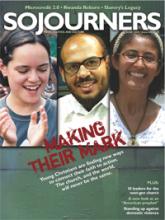For the first time in history, more people live in urban than rural areas, according to a 2007 U.N. report titled “Tomorrow’s Crises Today.” People across the globe are rapidly moving into and around cities for employment, social services, and safe housing.
“While these populations are growing, the systems of oppression are well entrenched,” TransAfrica Forum executive director Nicole Lee told Sojourners. “Many people who come to cities seeking opportunity find themselves in another emerging caste system. When a young man arrives in a slum in Nairobi looking for a better life, he will be tagged as a ‘slum person,’ and many doors are shut to him based upon education, ethnicity, and address.” Currently, 3.3 billion people live in urban areas worldwide.
What will it look like by 2030?
5 billion: The number of people projected to live in urban areas.
80 percent: Part of the global population that will live in the developing world.
2 billion: The number of people who will live in slums around cities—an increase from 924 million in 2001.
10 million: Cities with this population and higher will account for 60 percent of human water use and 80 percent of human-produced carbon emissions.
Sources: “Tomorrow’s Crises Today: The Humanitarian Impact of Urbanization” (OCHA/IRIN and U.N.-HABITAT, September 2007); CUNY Institute for Research on the City Environment.
Read the Full Article
